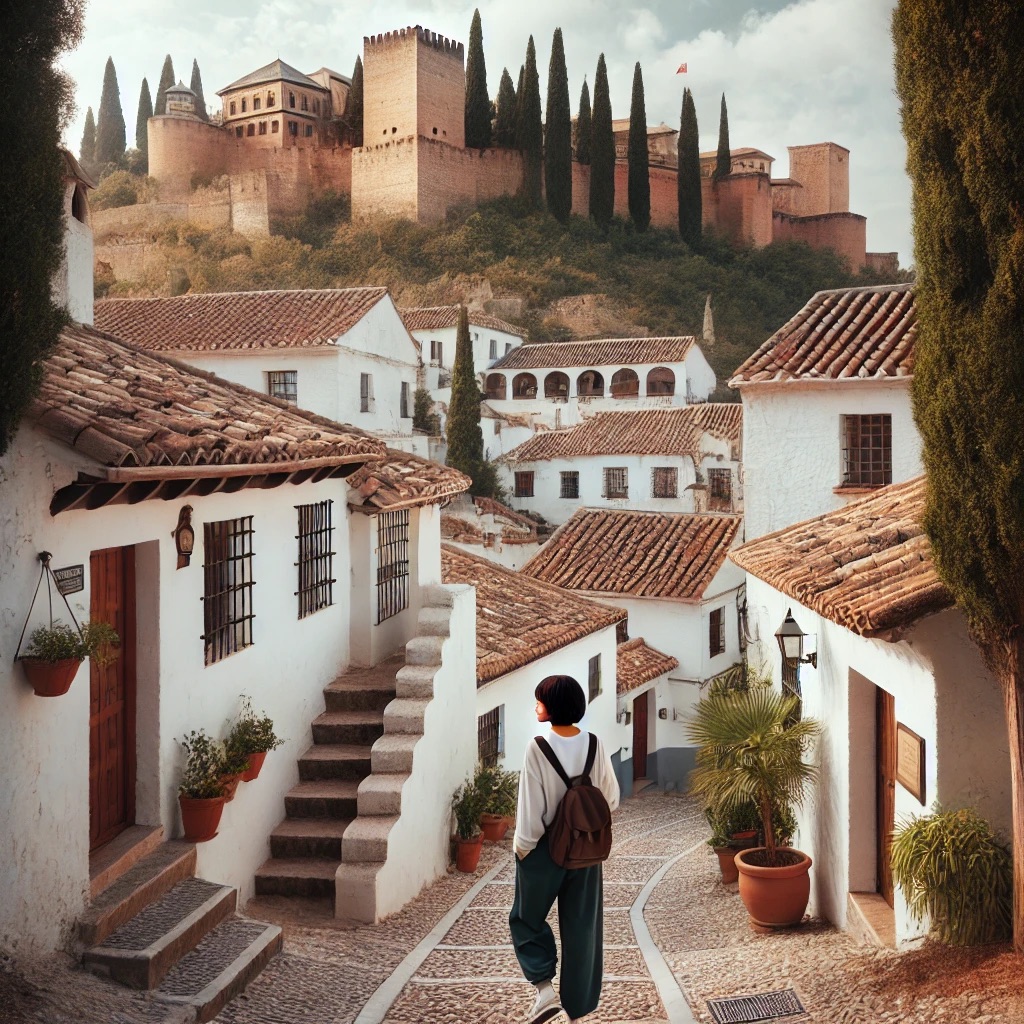ChatGPT:
The Albaicín (or Albayzín) is a historic neighborhood in Granada, Spain, known for its narrow, winding streets and rich Moorish heritage. Perched on a hillside across from the Alhambra, it offers stunning views of the palace, particularly from the Mirador de San Nicolás, a popular viewpoint. The Albaicín is characterized by its whitewashed houses, cobblestone streets, and an intricate maze-like layout that dates back to its origins as an Islamic quarter.
This neighborhood reflects the fusion of cultures, with remnants of its Moorish past, such as traditional cármenes (houses with private gardens), and its later Christian influences seen in the many churches converted from mosques. Visitors can explore landmarks like the Church of San Salvador, built on the site of a former mosque, or the El Bañuelo, an ancient Arab bathhouse.
Walking through Albaicín feels like stepping back in time, with a distinctly atmospheric charm, making it a must-see for those exploring Granada’s deep history and cultural diversity.
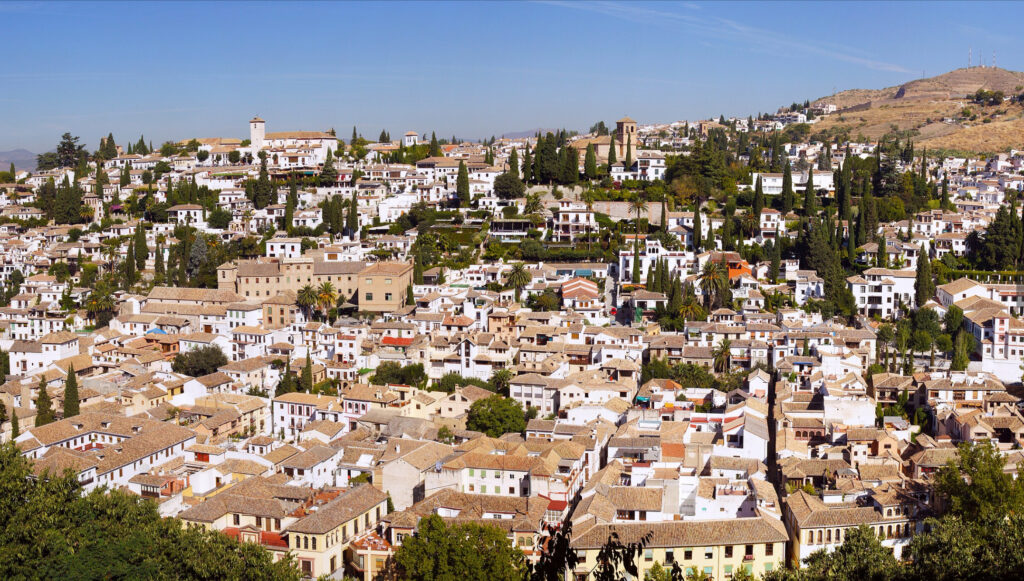
The Albaicín, or Albayzín, is one of the oldest parts of Granada, Spain, with origins dating back to ancient times. Its history reflects the city’s complex cultural and political evolution, particularly its Islamic heritage.
Origin
The Albaicín’s roots stretch back to the Roman period when the area was first inhabited, but it gained prominence during the Visigothic era (5th–8th centuries). However, its significant development began with the arrival of the Moors (Muslims) in the early 8th century after the Umayyad conquest of Hispania.
Islamic Rule and Development
The neighborhood flourished under Islamic rule, particularly during the 11th century when the Zirid dynasty established Granada as its capital. It became a key political and cultural center of Al-Andalus, the name given to Muslim Spain. During this time, the Albaicín’s intricate urban design developed, characterized by narrow, winding streets, steep alleys, and houses with private courtyards, which were typical of Islamic cities. The neighborhood was strategically positioned on a hill, offering natural defense and proximity to water sources from the Darro River.
Albaicín reached its peak under the Nasrid dynasty (13th–15th centuries), the last Muslim rulers of Spain. The Nasrids transformed Granada into a thriving cultural and economic center, and the Albaicín became home to artisans, merchants, and scholars. During this period, many mosques, bathhouses (hammams), and cármenes (houses with gardens) were built, some of which remain today.
The Christian Reconquista
In 1492, Granada was the last Muslim stronghold to fall to the Catholic Monarchs, Ferdinand and Isabella, marking the end of Muslim rule in Spain. The Christian conquest of the city brought significant changes to the Albaicín. Many of the mosques were converted into churches, such as the Church of San Salvador, which was originally the Great Mosque of Albaicín. The neighborhood’s Muslim population was initially allowed to remain under certain conditions, but over time, many were forced to convert to Christianity or face expulsion.
During the early Christian period, the area began to decline. The Muslim population diminished due to exile and forced conversions, and the neighborhood’s once-vibrant culture suffered. However, it retained much of its Islamic architectural influence.
Modern Development
Despite periods of neglect in the centuries following the Reconquista, Albaicín retained its Moorish character. In the 19th and 20th centuries, interest in Spain’s Islamic past surged, leading to efforts to preserve the neighborhood’s unique heritage. Today, it is a UNESCO World Heritage Site, recognized for its historical importance alongside the Alhambra.
Albaicín has evolved into a blend of its Moorish past and its post-Reconquista Christian heritage. Modern developments have restored and preserved many traditional homes, streets, and squares. It has also become a popular tourist destination, known for its panoramic views, cultural heritage, and vibrant atmosphere, while still serving as a residential neighborhood.
The Albaicín’s rich, layered history—ranging from its Islamic origins to its transformation under Christian rule—makes it a unique and integral part of Granada’s identity.
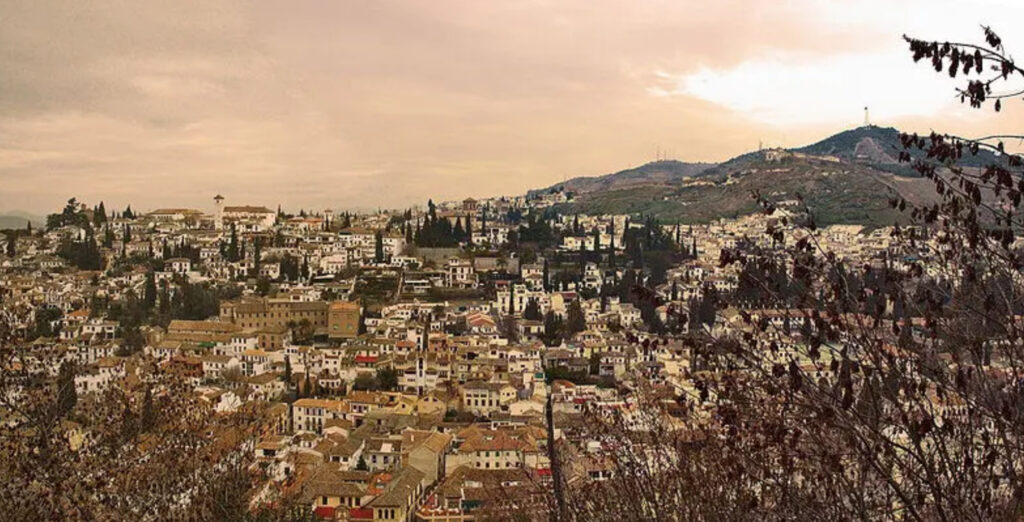
The Albaicín in Granada is rich in historical monuments and tourist attractions that reflect its Moorish and Christian heritage. Here are some of the key sites to visit in this iconic neighborhood:
1. Mirador de San Nicolás
• One of the most famous viewpoints in Granada, offering spectacular panoramic views of the Alhambra, especially at sunset, with the Sierra Nevada mountains in the background.
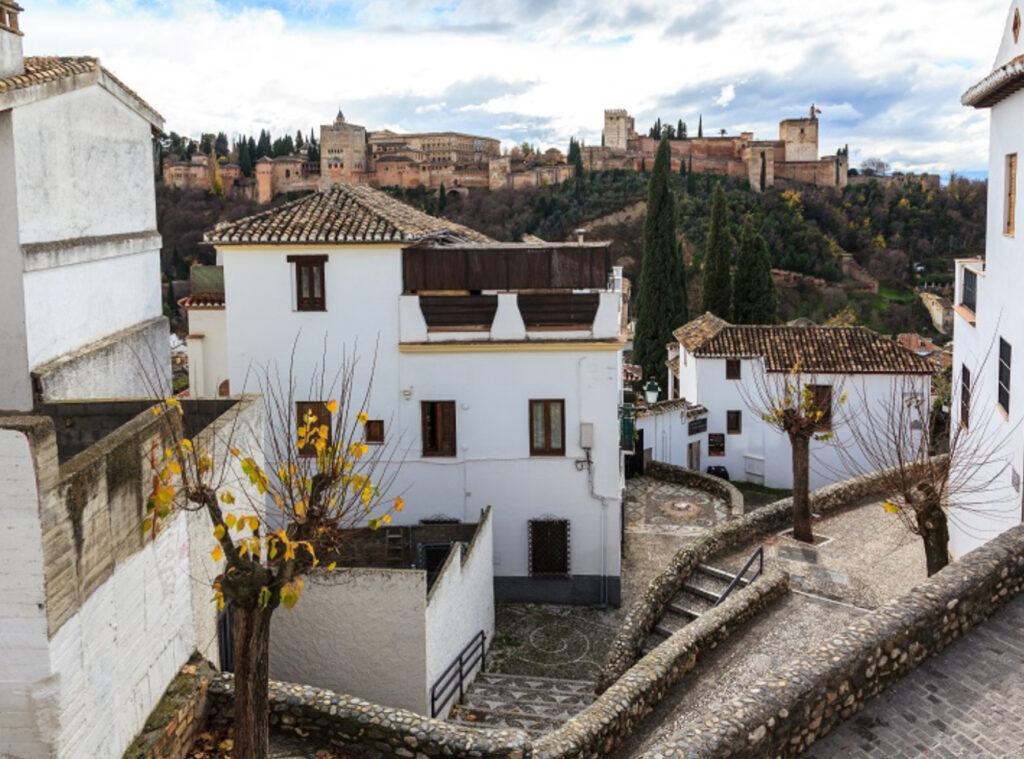
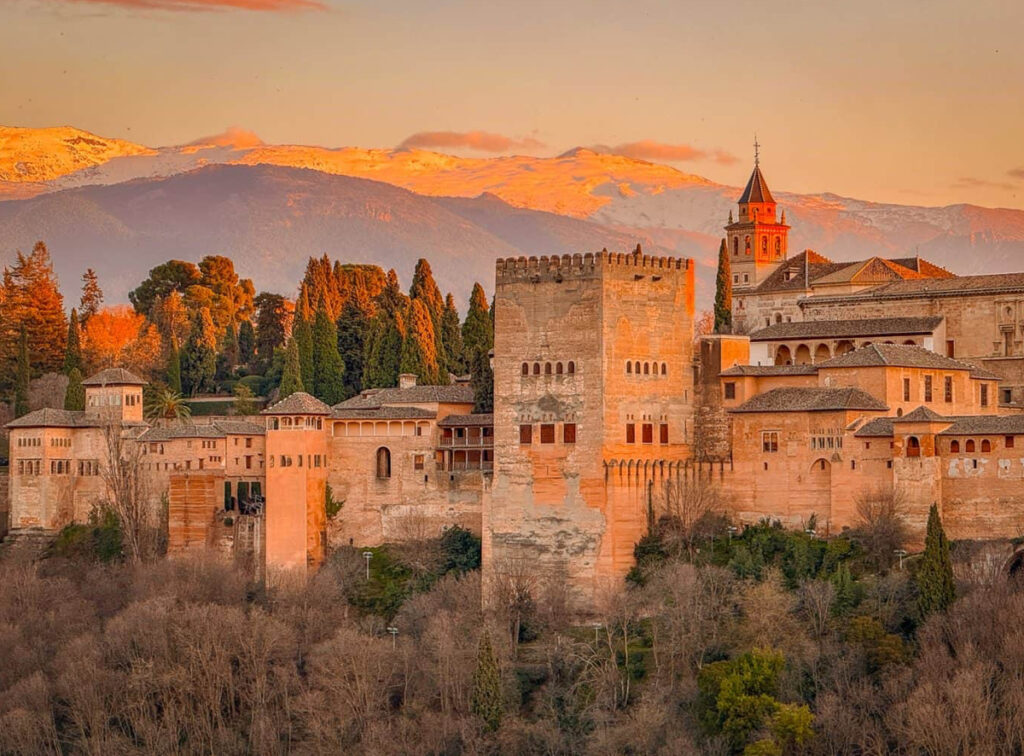
2. El Bañuelo (Arab Baths)
• These ancient 11th-century Arab baths are among the best-preserved in Spain. They were part of daily life during the Moorish era and give insight into Islamic bathing culture.
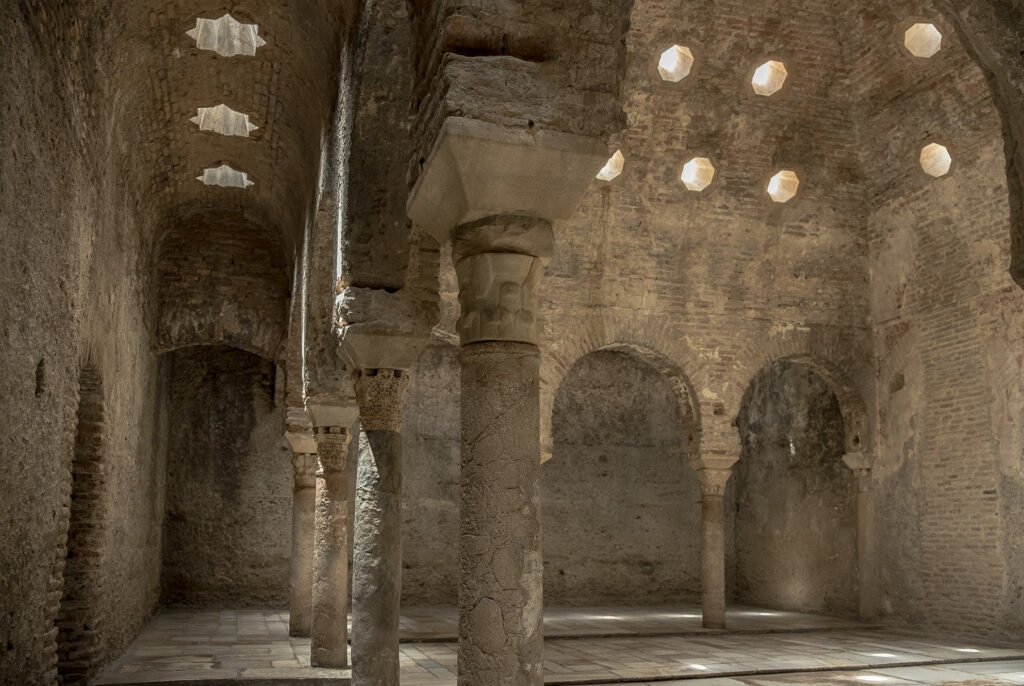
3. Iglesia de San Salvador
• This church is built on the site of the former Great Mosque of the Albaicín. The church’s courtyard (the original mosque’s sahn) still retains Moorish architectural elements, and the interior features a mix of Gothic and Renaissance styles.
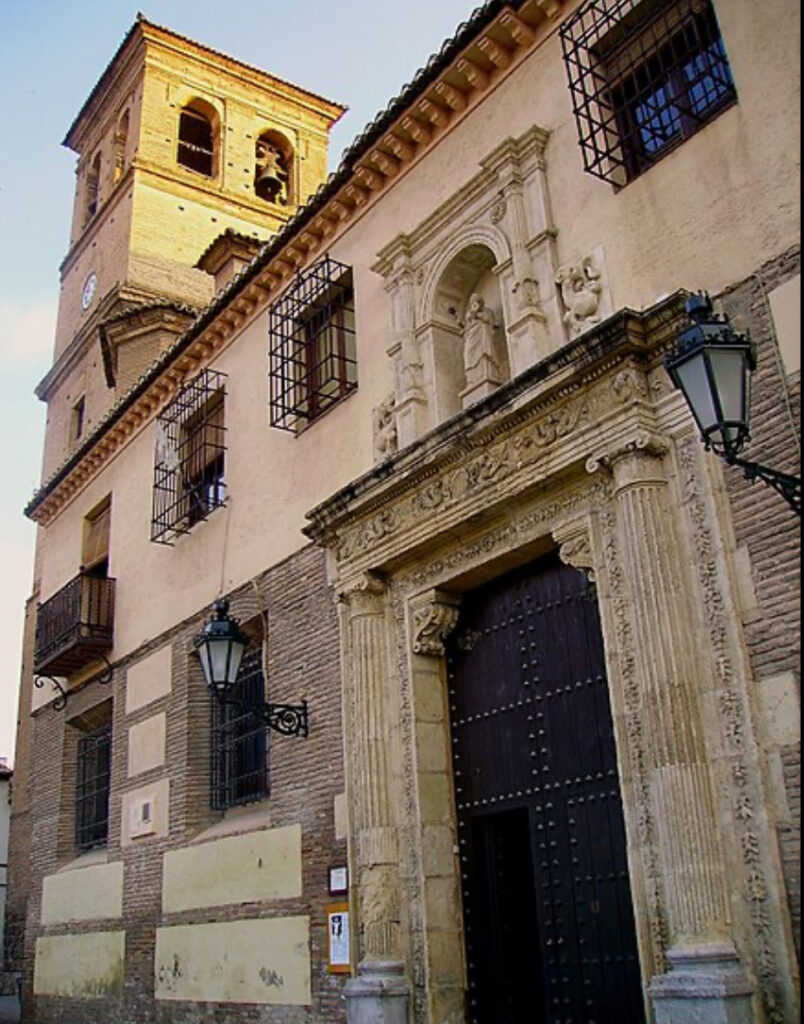
4. Calle Calderería Nueva
• Known as the “tea street,” this bustling street is lined with shops selling traditional Moorish crafts, souvenirs, and tea houses (teterías), offering an authentic taste of Granada’s Moorish heritage.
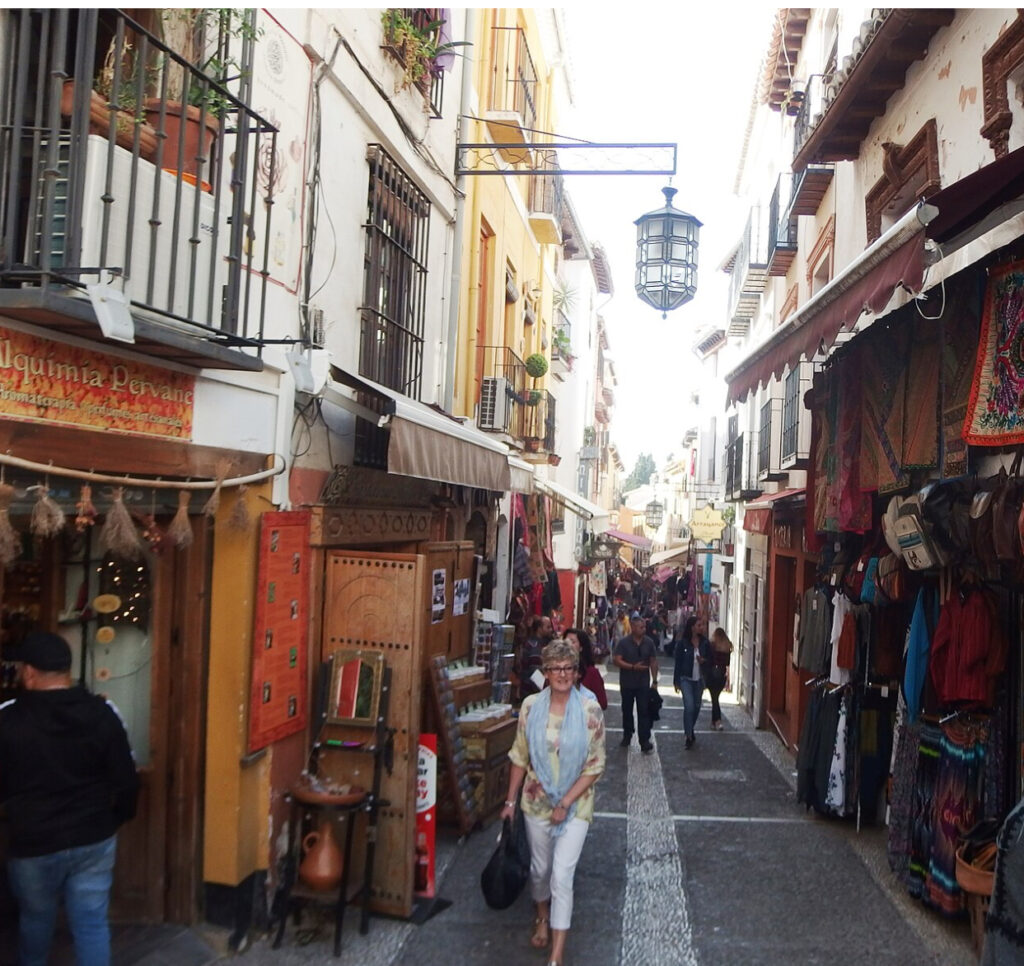
5. Palacio de Dar al-Horra
• A Nasrid palace that once served as the residence of Aixa, the mother of Boabdil, the last sultan of Granada. This small palace showcases the grandeur of Moorish architecture.
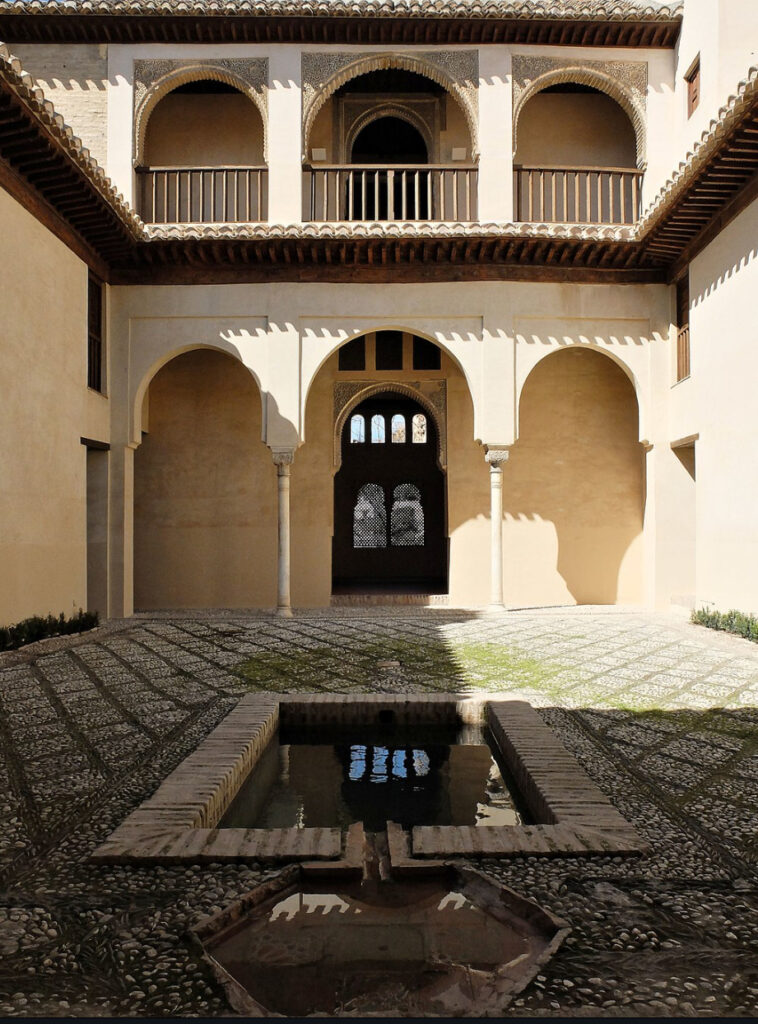
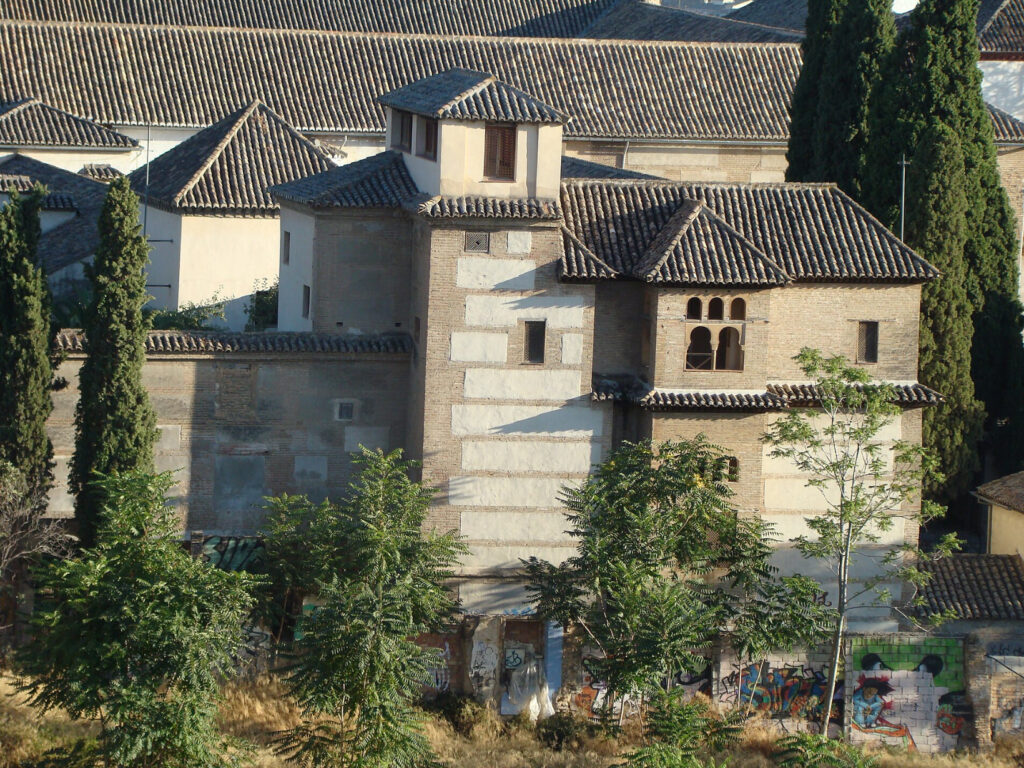
6. Iglesia de San Nicolás
• Situated next to the Mirador de San Nicolás, this church was built on the site of a mosque after the Reconquista and features beautiful views of the Alhambra.
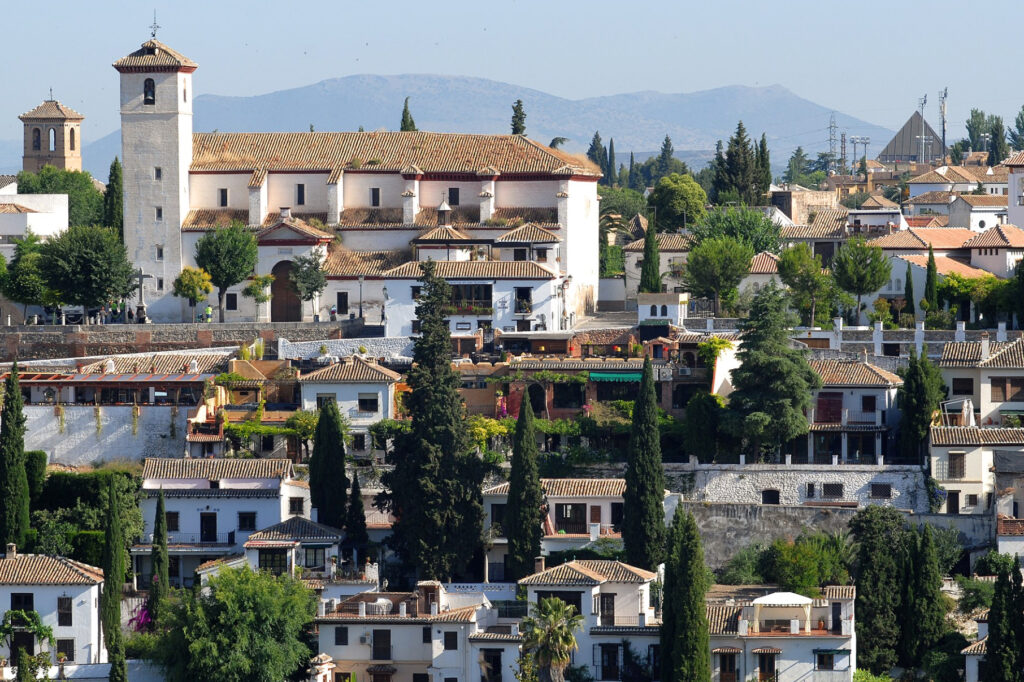
7. Alminar de San José
• This 11th-century minaret is one of the few remnants of the Moorish mosque that stood on this site. The minaret is now part of the Church of San José, which was built after the Reconquista.
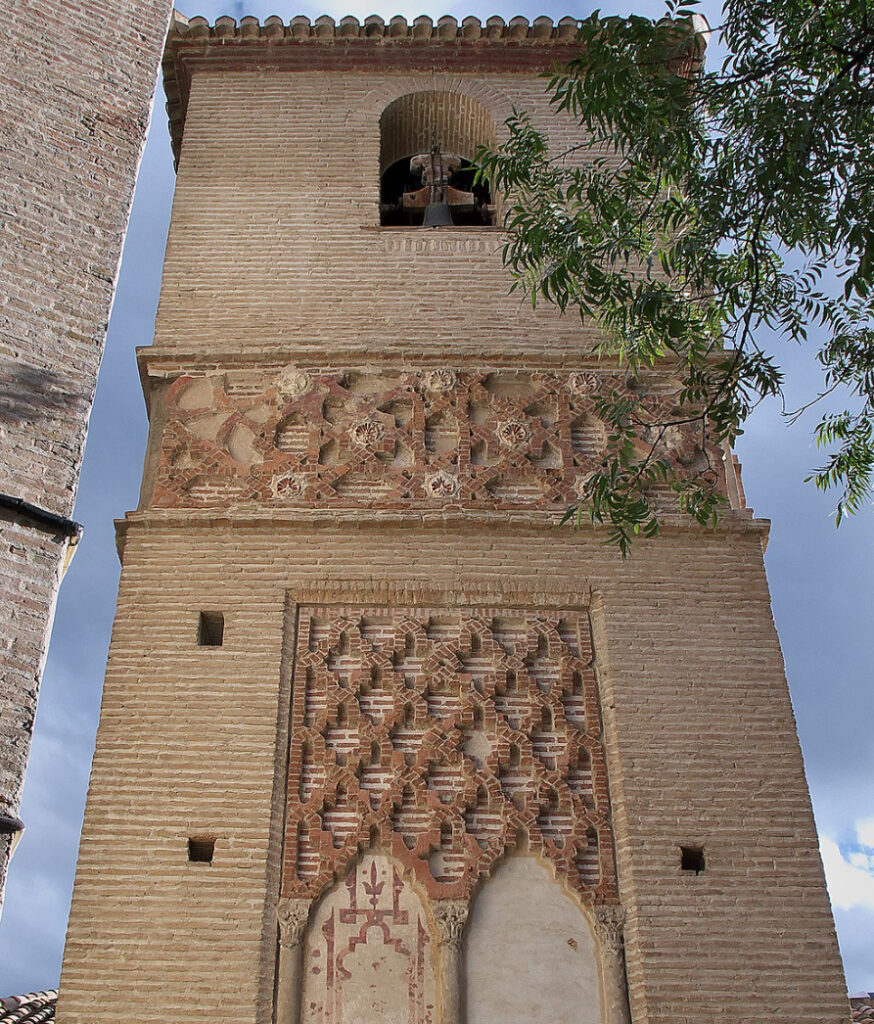
8. Arco de las Pesas (Puerta Nueva)
• A well-preserved city gate from the 11th century, it was part of the city’s fortifications and served as an important entrance to the Albaicín. Its name comes from the tradition of hanging false weights here as punishment for dishonest merchants.
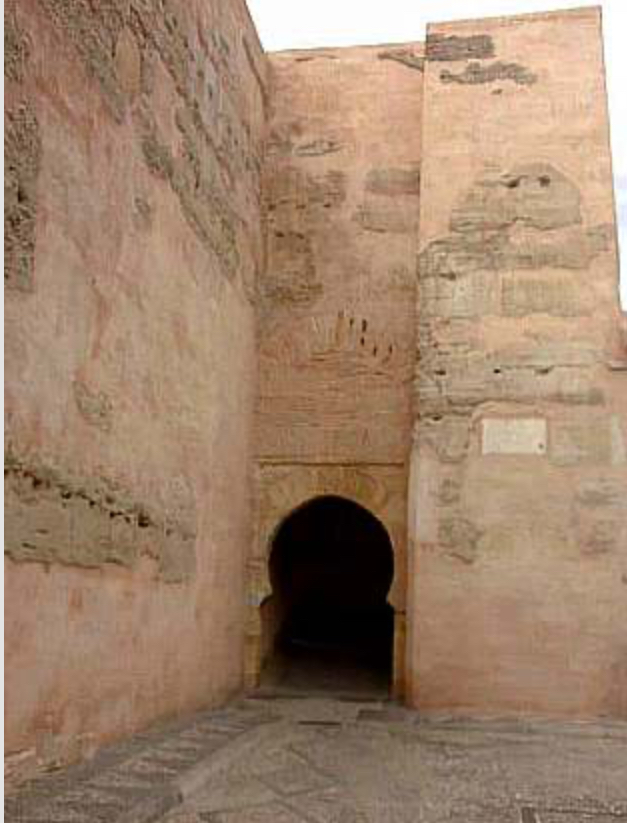
9. Iglesia de San Pedro y San Pablo
• Located near the Darro River at the base of the Albaicín, this 16th-century church is built in the Mudejar style, combining Gothic and Islamic architectural elements.
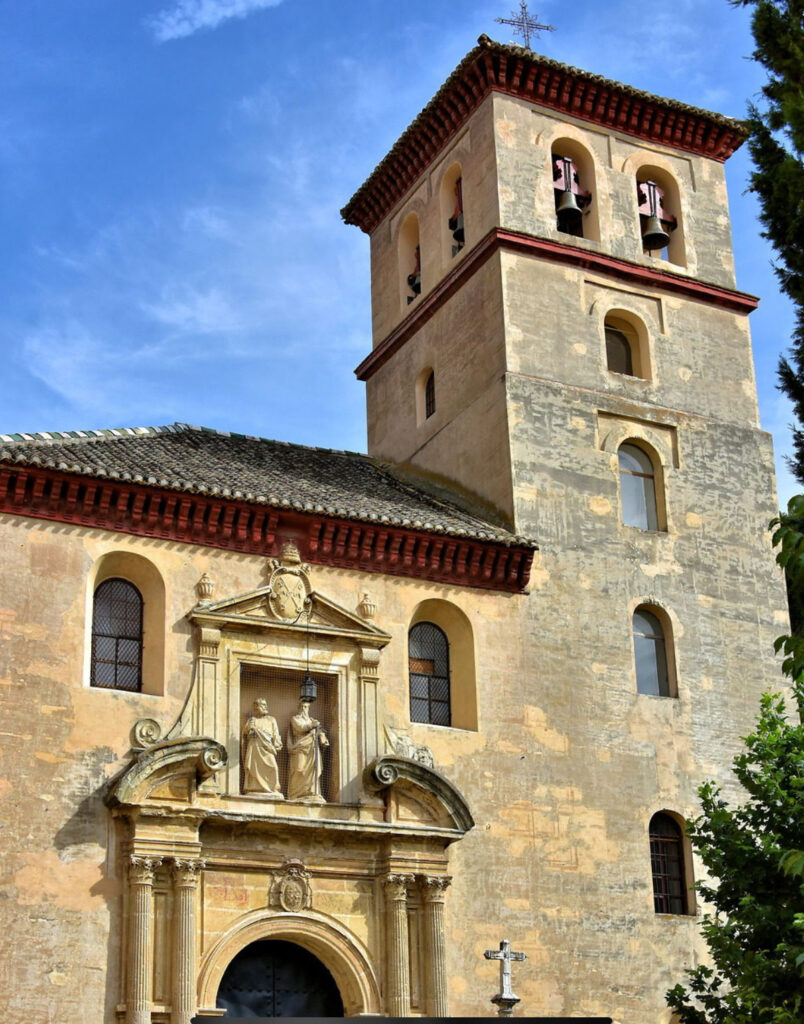
10. Casa de Zafra
• A 14th-century Nasrid house that has been restored and transformed into a museum, offering a glimpse into the lives of Granada’s Muslim elites during the Nasrid period.
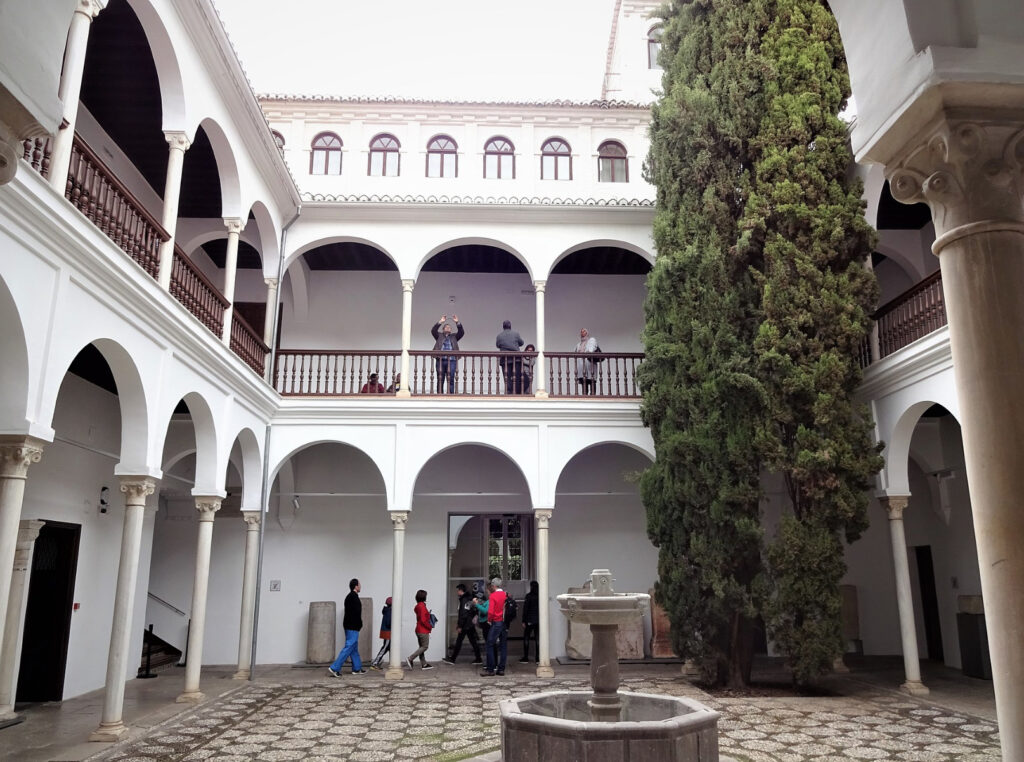
11. Plaza Larga
• A lively square at the heart of the Albaicín, filled with local shops, cafés, and traditional markets. It’s a great spot to experience the local atmosphere.
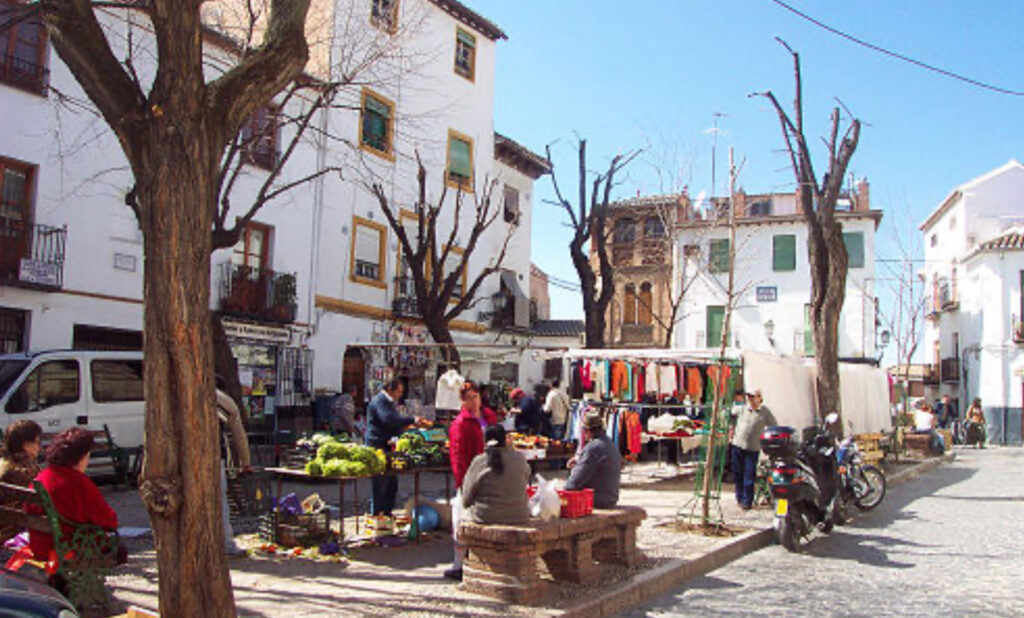
12. Cármenes
• Scattered throughout the Albaicín, cármenes are traditional Granada houses with walled gardens, combining Moorish and Christian architecture. Many are private homes, but some can be visited, such as the Carmen de los Mártires.
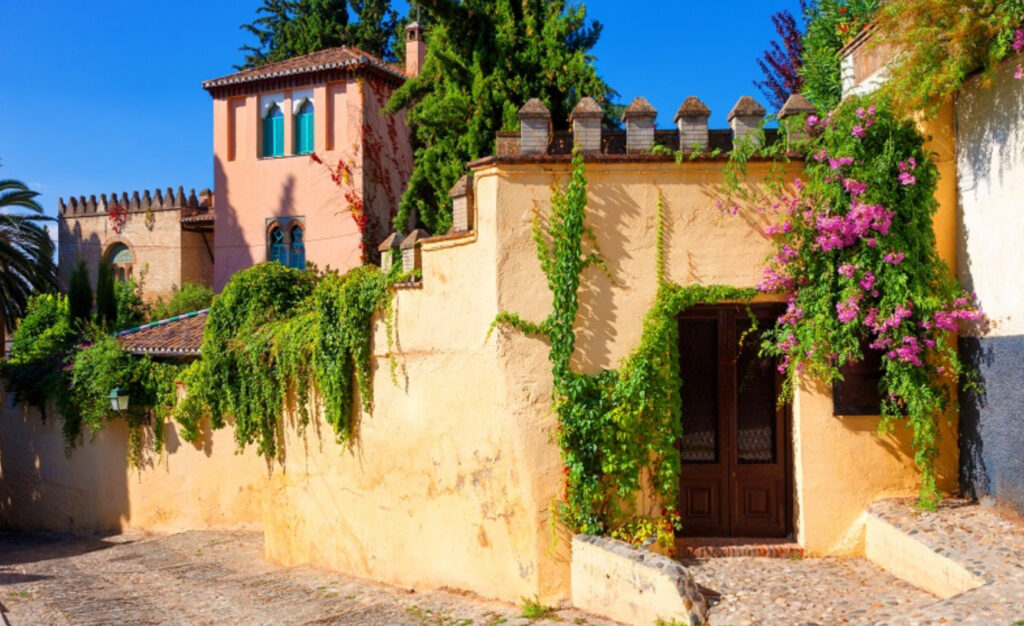
13. Puerta de Elvira
• This monumental gate, dating back to the 9th century, was once the main entrance to the city of Granada. It is a striking reminder of the city’s Islamic fortifications.
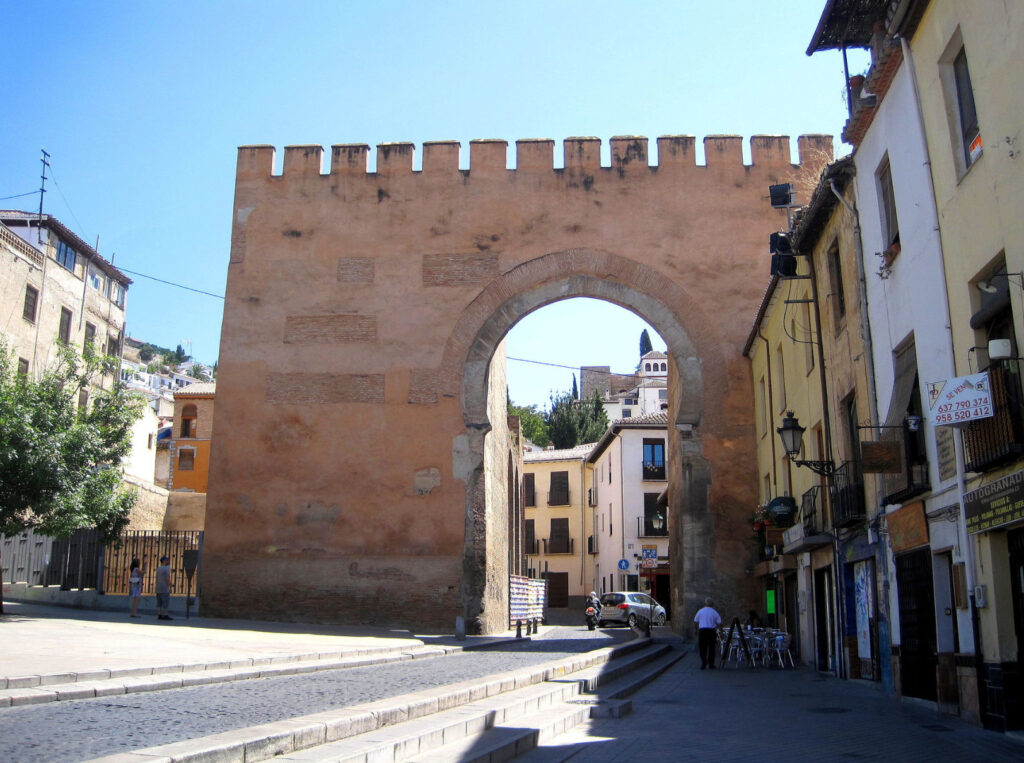
These monuments and attractions offer visitors a deep connection to the Albaicín’s history, blending Islamic, Christian, and modern influences in a beautifully preserved setting.
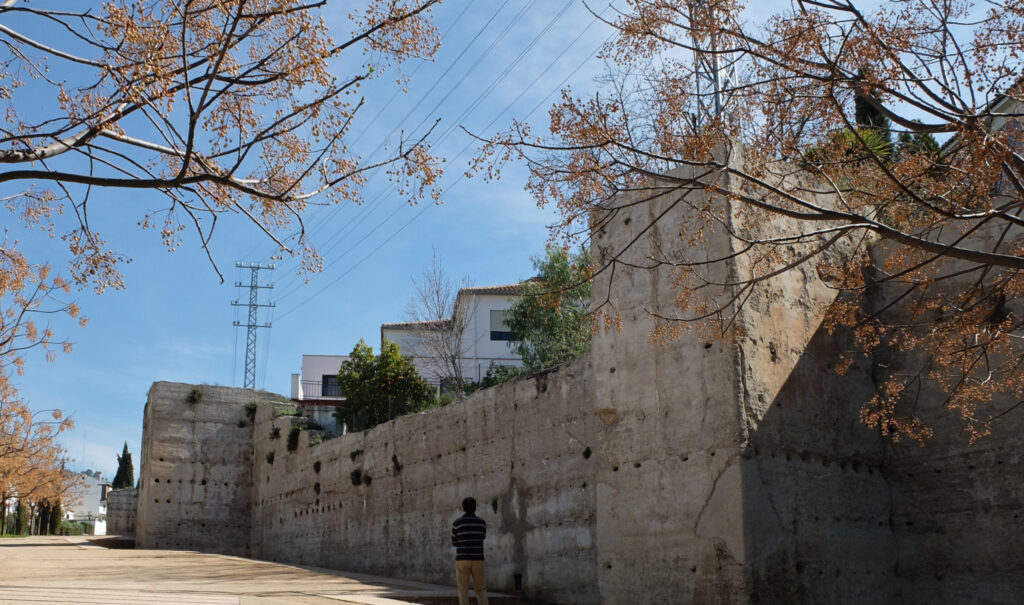
Here’s a half-day leisure itinerary for visiting the Albaicín, perfect for experiencing its historical charm, vibrant atmosphere, and local food scene, ending in the late evening:
3:00 PM – Start at Plaza Nueva
• Begin your journey at Plaza Nueva, the central square at the foot of the Albaicín. It’s the perfect starting point to appreciate the architectural beauty of the area and grab a light afternoon snack, like a tostada or some piononos (a local pastry), from one of the nearby cafés.
3:30 PM – Explore the Darro River and Paseo de los Tristes
• Walk along the Carrera del Darro, a picturesque street that runs parallel to the Darro River. Enjoy the cobblestone paths, ancient bridges, and views of the Alhambra rising above. Continue along the Paseo de los Tristes, a charming promenade full of life and local character.
4:00 PM – Visit El Bañuelo (Arab Baths)
• Stop by El Bañuelo, one of Spain’s oldest and best-preserved Arab baths, dating back to the 11th century. This site offers a glimpse into the bathing culture of Moorish Granada and is a peaceful, intimate historical experience.
4:45 PM – Stroll Through Calle Calderería Nueva
• Head up to Calle Calderería Nueva, also known as the “tea street.” Here you’ll find teterías (Moorish tea houses) and small shops selling handmade crafts and Moorish souvenirs. Stop at one of the traditional teterías for a relaxing break with mint tea and a small snack like baklava.
5:30 PM – Visit Palacio de Dar al-Horra
• Continue exploring the history of the Nasrid rulers at Palacio de Dar al-Horra, the former residence of Queen Aixa, mother of Boabdil, the last sultan of Granada. Enjoy the peaceful setting and admire the Nasrid architecture.
6:15 PM – Sunset at Mirador de San Nicolás
• Make your way up the winding streets to the Mirador de San Nicolás, the most famous viewpoint in the Albaicín. Arrive just before sunset to enjoy the stunning views of the Alhambra bathed in golden light, with the Sierra Nevada mountains as a backdrop. This is the perfect spot for photographers and a leisurely pause.
7:00 PM – Dinner at a Local Restaurant
• As evening approaches, walk down toward Plaza Larga for a relaxing dinner. Here, you can find a variety of local restaurants that serve traditional Granada dishes with Moorish influences.
• Restaurante El Aji: Offers dishes like berenjenas con miel (fried eggplant with honey), albondigas morunas (Moorish meatballs), and local tapas.
• Casa Torcuato: A popular spot known for tapas like tortilla del Sacromonte (omelet with lamb sweetbreads) and gazpacho andaluz.
8:30 PM – Evening Stroll Through the Albaicín
• After dinner, take a leisurely evening stroll through the narrow streets of the Albaicín. Wander without a set route, letting yourself get lost in the labyrinthine alleys, discovering hidden courtyards, and enjoying the romantic nighttime atmosphere with lantern-lit streets.
9:00 PM – End with Drinks at Plaza Aliatar
• Finish your evening with a stop at Plaza Aliatar, a cozy square where you can enjoy a final drink at one of the bars offering an assortment of Andalusian wines or local beers. Relax as the neighborhood quiets down, soaking in the peaceful ambiance of the Albaicín by night.
This itinerary offers a blend of historical exploration, stunning views, and a chance to experience Granada’s unique Moorish-inspired food scene, making it a perfect way to spend a leisurely afternoon and evening in the Albaicín.
